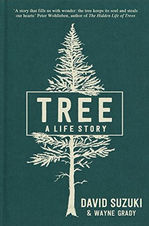


MINERALS
The roots of a forest are the minerals underneath.
and a few other interesting facts...
TAKE A SCIENTIFIC WALK THROUGH GREENMANTLE
with mineral ethusiast and gem photographer, Michael Bainbridge
LEARN MORE ABOUT MINERALS, CRYSTALS AND ROCKS
What is a mineral?
A mineral is a naturally occuring solid, with a definite
chemical composition and a characteristic crystalline
structure. For example, in this photo of the rare mineral
fluoro-richterite you can see the large crystal formations.
The shape of the crystals is one of the ways of identifying
a mineral.
What is a rock?
A rock is usually an aggregate of minerals. This example
of granite contains mineral crystals, but the crystals
are very very small.
What is a crystal?
A crystal is any solid material in which the component atoms are arranged in a definite pattern. Crystals are formed when a liquid or gas becomes a solid (crystallization) with a ordered arrangement.
All minerals display a microscopic crystal structure when
they are solid, but under ideal circumstances the
crystals can grow to a size we can see with the
naked eye. Crystals need room to grow when they
are changing from a liquid to a solid. When this
happens we can see them as individual crystals.
So think about WATER. When a liquid,
if it is in a container
and then frozen, becoming a solid mineral
the crystals of ice are not usually visible to the eye.
BUT, if water freezes (crystallizes)
with room for crystals to grow (open air)
you can get snow flakes!
Snowflakes are also known for having great
variety in their structures. This is because
each ice crystal forms as it falls through layers
of air. Each layer has a slightly different temperature
and a little more or less water available for adding
the crystal structure. Ice crystals form differently in these various kinds of air.
AS MINERALS ARE COOLING,
IF THEY HAVE SPACE, THEIR CRYSTAL
FORMATIONS WILL GROW LARGER.
A billion years ago, when minerals were cooling and forming rocks, the large calcite dome found at Greenmantle allowed for big crystals to grow, 10 to 20 kilometers below the surface. Now they have reached the surface, and since this land has been untouched by human disturbance, you can see these large crystals in their natural setting.
Watch this video to see water cooling and crystalizing into a snowflake - now imagine this happening very, very, slowly underground, and this is how mineral crystals are formed.
.jpg)




























THE GREENMANTLE FARM MINERAL OCCURENCE
An article about this special place written by famed geologist, John Etches
(for best reading, zoom or hit Full Screen)
you can also print or download.
CHEX NEWS visits Greenmantle
FURTHER YOUR KNOWLEDGE OF GEOLOGY & FORESTS
books to delve into

Mark's Book Selection for 2022
The Overstory, winner of the Pulitzer Prize in Fiction, is a sweeping, impassioned work of activism and resistance that is also a stunning evocation of—and paean to—the natural world. From the roots to the crown and back to the seeds, Richard Powers’s twelfth novel unfolds in concentric rings of interlocking fables that range from antebellum New York to the late twentieth-century Timber Wars of the Pacific Northwest and beyond. There is a world alongside ours—vast, slow, interconnected, resourceful, magnificently inventive, and almost invisible to us. This is the story of a handful of people who learn how to see that world and who are drawn up into its unfolding catastrophe.
Winner of the 2019 Pulitzer Prize in Fiction
Shortlisted for the 2018 Man Booker Prize
New York Times Bestseller
A New York Times Notable Book and a Washington Post, Time, Oprah Magazine, Newsweek, Chicago Tribune, Kirkus Reviews, and Amazon Best Book of the Year
Rare Books - but very informative, especially the maps
Trent Watershed Survey- Commission of Conservation Canada
C.D. Howe & J.H.White,1913
Fifty-Second Annual Report of the Ontario Dept. of Mines 1943
Part 2-Mineral Occurrences in the Haliburton Area
J.Satterly 1943




















